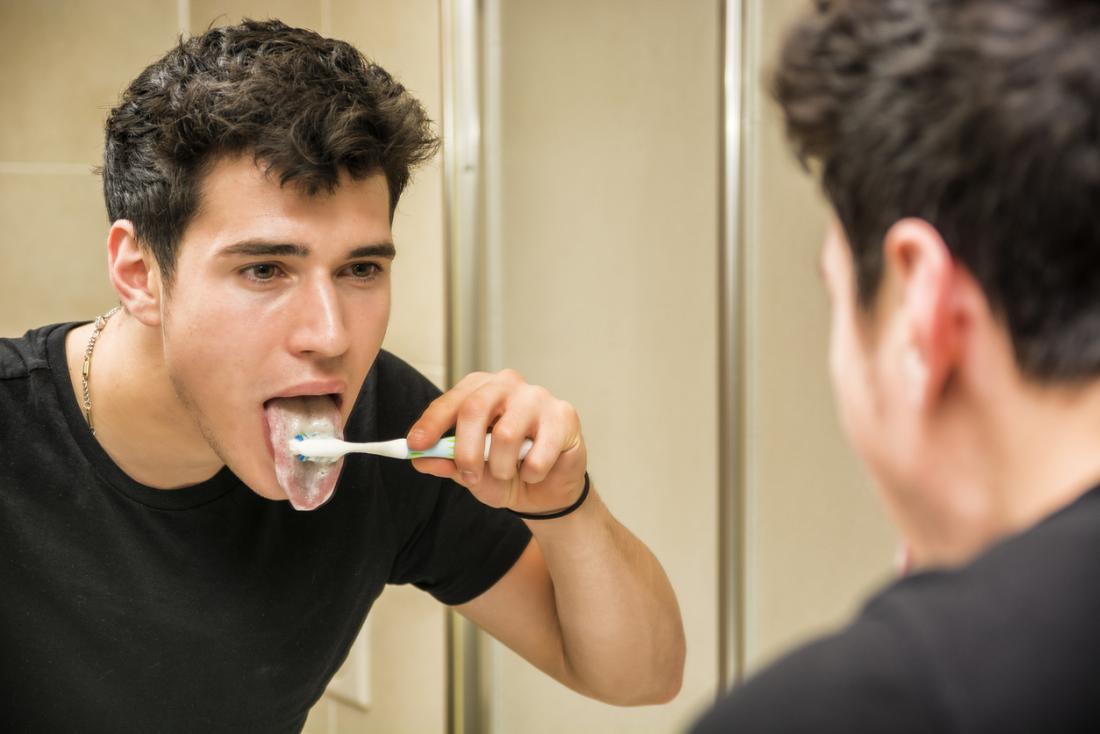Although it may seem unpleasant, hairy tongue is a relatively harmless condition that can be easily dealt with in most cases.
Here, we will discuss what hairy tongue is, how it can be triggered and how it may be treated or prevented.
- The exact causes of hairy tongue are sometimes unknown.
- Most cases do not have any symptoms other than appearance.
- Treatments include good oral hygiene, regular brushing, and mouthwash.
What is hairy tongue

Hairy tongue is when a buildup of filiform papillae forms on the tongue, creating a layer of ‘hair’.
The upper surface of the tongue is rough in texture because it is covered in tiny, processes or protrusions called papillae. There are several types of papillae, the most numerous of which are called filiform papillae.
Filiform papillae are elongated, cone-shaped protrusions responsible for the gripping of food on the surface of the tongue. These structures usually grow to about 1 millimeter in length before they are shed from the tongue, allowing new ones to grow.
Hairy tongue occurs when these filiform papillae do not shed properly, and there is a buildup of the skin protein known as keratin. When this happens, food, bacteria, or yeast can accumulate in the over-keratinized filiform papillae network and cause odd discoloration.
When shedding is delayed, filiform papillae continue to build up in the keratin and resemble the hair-like protrusions from which the condition takes its name.
How common is hairy tongue?
According to the American Academy of Oral Medicine, hairy tongue is thought to affect around 13 percent of the population, but its prevalence varies in some groups. For example, hairy tongue is much more common in individuals with certain drug addictions.
The chances of hairy tongue developing increase with age, as the effects of risk factors, such as tobacco use, have more time to accumulate.
Causes

Black hairy tongue may be caused by tobacco, tea, or coffee.
Image credit: Com4, (2007, February 22)
Different factors can trigger the onset of hairy tongue. These include:
- A soft diet: A lack of stimulation for abrasion to the surface of the tongue can prevent sufficient shedding of the papillae.
- Poor oral hygiene: This can cause a buildup of bacteria or yeast, contributing to hairy tongue.
- Certain substances: Tobacco use, as well as excessive consumption of alcohol, coffee or tea, for example.
- Dehydration or dry mouth: Lack of moisture in the mouth can make a person more prone to having hairy tongue.
- Certain medications: These include some treatments for stomach acid reflux.
- Oral hygiene products: Certain types of mouthwash, such as those containing peroxide.
Hairy tongue can take on a number of different colors, but some triggers will cause specific colors to develop. An example of this is black hairy tongue, which is associated with the consumption of tobacco, coffee, tea, or use of some mouthwashes.
A tongue with the condition called oral hairy leukoplakia is usually caused by a viral infection, such as human Immunodeficiency virus (HIV) or Epstein-Barr virus (EBV), weakening a person’s immune system.
The microscopic appearance of a tongue with oral hairy leukoplakia differs from that of hairy tongue, as the two conditions are different. However, oral hairy leukoplakia can cause the tongue to have white patches that look hairy in appearance upon close inspection.
Symptoms
Appearance aside, it is possible for other symptoms of hairy tongue to develop, including:
- a burning sensation on the tongue
- a tickling on the roof of the mouth when swallowing
- a gagging sensation
- bad breath, otherwise known as halitosis
- a metallic taste in the mouth
- nausea
Treatment and prevention

Practicing good oral hygiene, and gently brushing the tongue, may help to prevent and treat hairy tongue.
Medical treatment is often not necessary for hairy tongue, as it is typically a transient condition, which poses no serious health risk.
Treatment and prevention are typically achieved through changes to a person’s lifestyle that may have trigger the onset of hairy tongue. Oral hygiene and regular visits to the dentist are the best ways to stop hairy tongue from occurring.
It is also essential to maintain a nutritious and well-balanced diet, containing a good balance of fresh fruits, vegetables, grains, and minimal sugar to promote oral health.
Consuming a sufficient amount of water throughout the day will also help to keep the mouth clean.
Other approaches may include:
- Avoiding or limiting the consumption of substances that are associated with hairy tongue, such as coffee, tea, alcohol, or tobacco.
- Brushing the tongue or using a specialized tongue scraper to help with oral hygiene.
- Switching medications, if this is a suspected trigger of hairy tongue. However, this should only be attempted in consultation with a doctor.
In rare cases, the condition can be more persistent, and medical help should be sought from a doctor or a dentist.
If lifestyle changes have not been successful in treating the condition, a doctor or dentist may recommend further evaluation and a more focused treatment. For example, an antibiotic or antifungal medication may be prescribed to remove bacteria or yeast.
It is also possible in some cases to have the filiform papillae surgically removed.
Takeaway
The unpleasant appearance of hairy tongue may cause some psychological discomfort or embarrassment, but it is usually a harmless condition with no other symptoms.
Maintaining good oral hygiene is important in preventing and treating incidences of hairy tongue. However, in rare cases, medicine or surgery may be needed to treat the condition.
Let’s block ads! (Why?)





